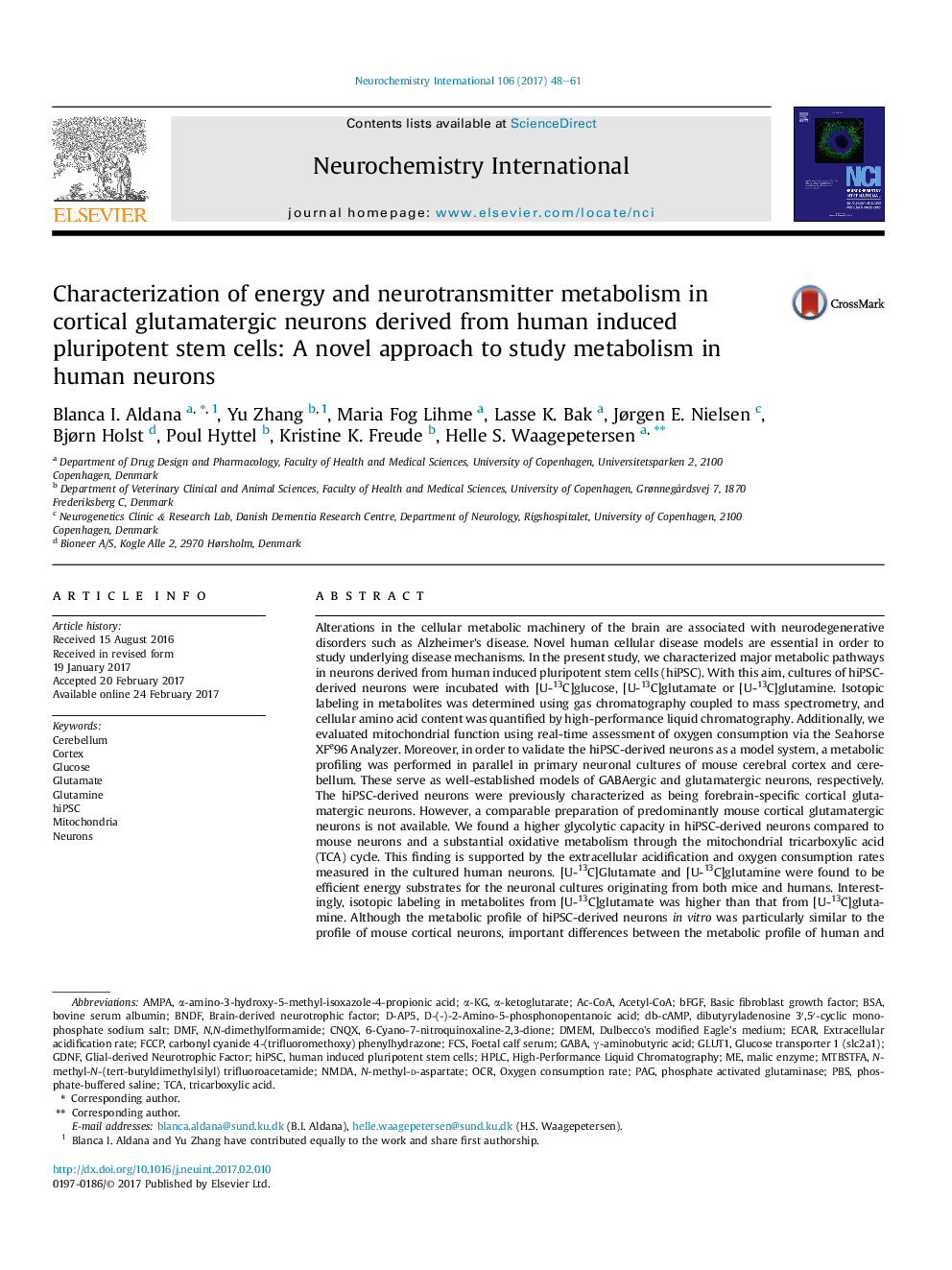| کد مقاله | کد نشریه | سال انتشار | مقاله انگلیسی | نسخه تمام متن |
|---|---|---|---|---|
| 5534747 | 1551269 | 2017 | 14 صفحه PDF | دانلود رایگان |
- Metabolic pathways can be mapped in cultured hiPSC-derived neurons using 13C-labeled substrates and mass spectrometry.
- hiPSC-derived neurons are metabolically highly active cells.
- hiPSC-derived neurons avidly metabolize glucose via glycolysis and TCA cycle.
- Glutamate is a preferred substrate over glutamine in cultured hiPSC-derived neurons.
- Cultured hiPSC-derived neurons can be used as a valuable model to study cellular metabolism in health and disease.
Alterations in the cellular metabolic machinery of the brain are associated with neurodegenerative disorders such as Alzheimer's disease. Novel human cellular disease models are essential in order to study underlying disease mechanisms. In the present study, we characterized major metabolic pathways in neurons derived from human induced pluripotent stem cells (hiPSC). With this aim, cultures of hiPSC-derived neurons were incubated with [U-13C]glucose, [U-13C]glutamate or [U-13C]glutamine. Isotopic labeling in metabolites was determined using gas chromatography coupled to mass spectrometry, and cellular amino acid content was quantified by high-performance liquid chromatography. Additionally, we evaluated mitochondrial function using real-time assessment of oxygen consumption via the Seahorse XFe96 Analyzer. Moreover, in order to validate the hiPSC-derived neurons as a model system, a metabolic profiling was performed in parallel in primary neuronal cultures of mouse cerebral cortex and cerebellum. These serve as well-established models of GABAergic and glutamatergic neurons, respectively. The hiPSC-derived neurons were previously characterized as being forebrain-specific cortical glutamatergic neurons. However, a comparable preparation of predominantly mouse cortical glutamatergic neurons is not available. We found a higher glycolytic capacity in hiPSC-derived neurons compared to mouse neurons and a substantial oxidative metabolism through the mitochondrial tricarboxylic acid (TCA) cycle. This finding is supported by the extracellular acidification and oxygen consumption rates measured in the cultured human neurons. [U-13C]Glutamate and [U-13C]glutamine were found to be efficient energy substrates for the neuronal cultures originating from both mice and humans. Interestingly, isotopic labeling in metabolites from [U-13C]glutamate was higher than that from [U-13C]glutamine. Although the metabolic profile of hiPSC-derived neurons in vitro was particularly similar to the profile of mouse cortical neurons, important differences between the metabolic profile of human and mouse neurons were observed. The results of the present investigation establish hallmarks of cellular metabolism in human neurons derived from iPSC.
185
Journal: Neurochemistry International - Volume 106, June 2017, Pages 48-61
